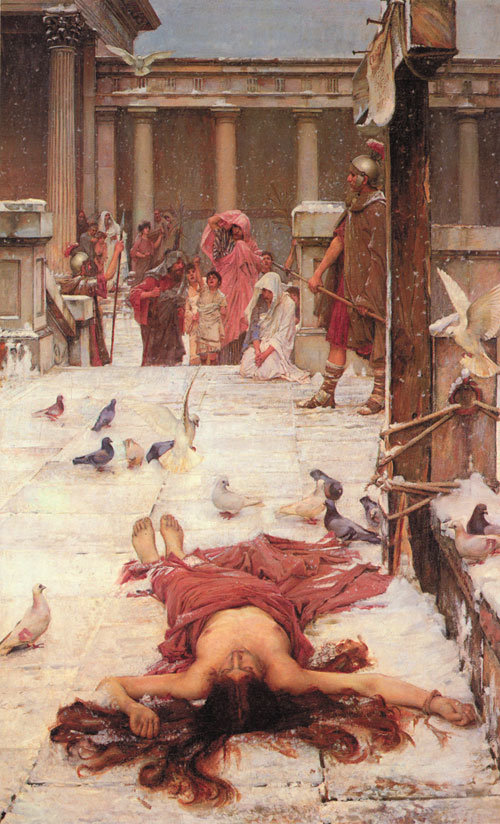A brave girl
A brave girl
Posted December. 09, 2021 07:32,
Updated December. 09, 2021 07:32

The dead body of a young woman in nude is laid on a snowy plaza. A cross is erected on the right, while a soldier holding a spear guards the scene. Villagers are shown in the background, while a group of doves circle the corpse. What happened to this woman?
A 13-year-old girl named Eulalia lived near Barcelona in 304, when Spain was ruled by the Roman Empire. She was a devoted Catholic of aristocratic background, very smart and courageous. The Roman Emperor at that time persecuted and killed many Catholics that did not worship him. Eulalia was one of them, and she suffered severe punishment. She was whipped, beaten, and forced to be rolled down a hill with her bare body stuffed in a barrel full of broken glass, nails, and other sharp objects. When she miraculously emerged without a single scar, she was ordered to be crucified. As she took her last breath, snow fell and blanketed her bare body and doves emerged from her lips and flew off to the skies.
British artist John William Waterhouse (1849-1917) depicted Eulalia’s story boldly. He horizontally placed the corpse in the front of the painting, which dramatically reduced the size of the body. Her flowing hair and bare body stands are sharp contrast with the white snow. The villagers are placed in a far background, fixating the audience’s attention to the young girl. Perhaps the painted wanted to avoid criticism of depicting a martyr’s body in a sensual manner. He partially covered her body with red cloth, symbolizing blood, and drew a group of doves which symbolize the holy spirit. The soldier’s spear faces the cross, emphasizing the violence and cruelty of Roman soldiers who killed the young girl.
The young martyr who was sacrificed to violence and suppression became Saint Eulalia of Barcelona. The question Waterhouse appears to pose on us – “Have you ever risked your life for your beliefs?”
Headline News
- Joint investigation headquarters asks Yoon to appear at the investigation office
- KDIC colonel: Cable ties and hoods to control NEC staff were prepared
- Results of real estate development diverged by accessibility to Gangnam
- New budget proposal reflecting Trump’s demand rejected
- Son Heung-min scores winning corner kick







